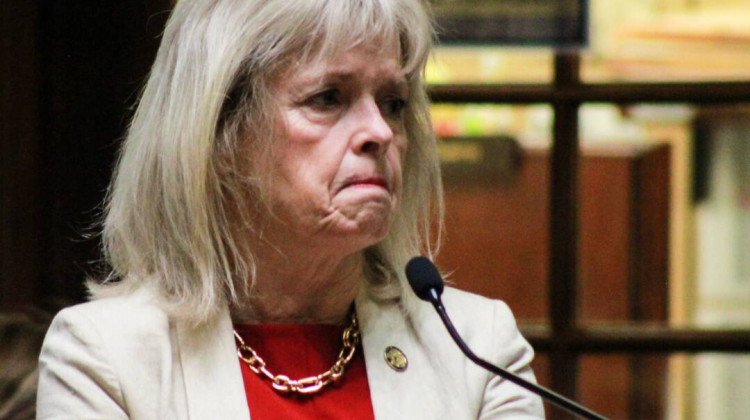
Garfield Park is just one of many locations where the city of Indianapolis has planted trees since 2020.
Rebecca Thiele/IPB NewsA pilot program to plant trees to make Indiana cities more resilient to extreme heat and flooding is expanding.
Indiana University’s Environmental Resilience Institute got a $5 million grant from the federal Inflation Reduction Act to help more cities build out their green infrastructure over the next five years.
Often the neighborhoods that need trees the most in a city have the least. Lower-income, Black, and Brown communities are more vulnerable to the effects of climate change and — because of racist policies like redlining — they usually have fewer trees.
IU professor Sarah Mincey is managing director for the Environmental Resilience Institute. She said trees help to slow down rainfall, which can help reduce flash floods as that rain reaches hard surfaces like roads and sidewalks. Trees provide shade, which can cool down residents as they walk or bike in the heat. They can also shade buildings and block the wind — making buildings more energy efficient.
Mincey said the original urban green infrastructure pilot program helped cities to find these equity gaps and make tree planting plans.
READ MORE: Statewide urban forest map aims to help cities close gaps in tree cover
Join the conversation and sign up for the Indiana Two-Way. Text "Indiana" to 73224. Your comments and questions in response to our weekly text help us find the answers you need on statewide issues, including this series on climate change and solutions.
With this new funding, Mincey said the institute will be able to help pay for the trees too — about 100 trees each for five cities every year. It’ll also cover about two to three years of maintenance on the new saplings — things like watering, mulching and pruning — to help ensure they survive.
“So that they are actually able to produce the ecosystem services that we want from them, which is the ultimate goal of the program to make sure that these communities are getting the shade and are getting all the other benefits that come from trees," she said.
Mincey said maintenance is one of the most important parts of urban forestry and it's also one of the harder things to find funding for — she said it just doesn't sound as exciting as tree planting.
Since the pilot program started in 2020, Bloomington has planted more than 2,000 trees and Indianapolis has planted more than 18,000.
Overall since 2018, Indianapolis has planted 30,000 trees through various initiatives including the Thrive Indy plan.
The deadline for cities to apply for the program is Monday, Dec. 11 at noon.
Rebecca is our energy and environment reporter. Contact her at rthiele@iu.edu or follow her on Twitter at @beckythiele.
 DONATE
DONATE






 Support WFYI. We can't do it without you.
Support WFYI. We can't do it without you.